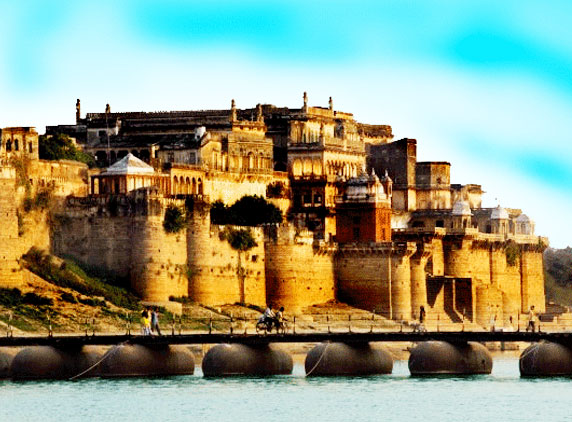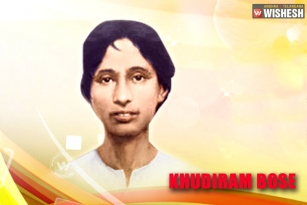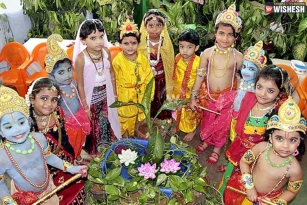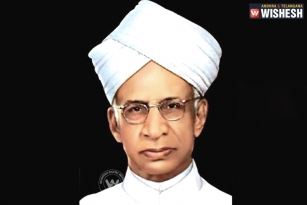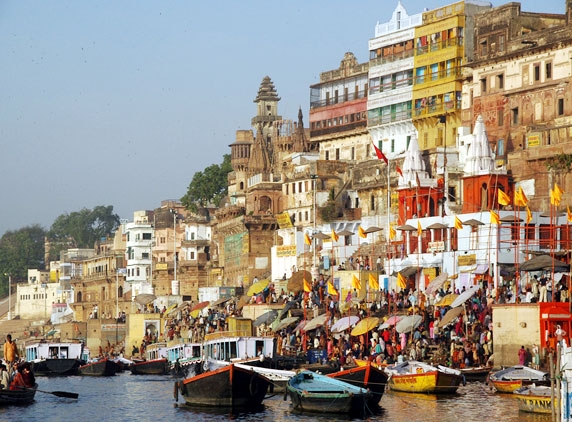
"Enlightenment, and the death which comes before it, is the primary business of Varanasi."
― Tahir Shah, Sorcerer's Apprentice
"Om Namah Shivaya"
One thing is certain: you cannot begin to fathom the mystery of India without a visit to Varanasi. Not that this old city will "explain" everything-in fact, it's dramatic confrontations of life and death on the Ganga river, and of scholarship and superstition, may only mystify you even further-but the city's aura of sanctity is so overwhelming that it supercedes any need for rational explanations. Perhaps the Muslim conquerors once perceived the "Hindus" reverence for Varanasi as a threat-there is no temple in this 3,000 year old city dating from before the 18th century-but later it became a holy city for Muslims, too, with Emperor Aurangzeb even trying to rename it Muhammadabad.
The name Varanasi, misheard by Europeans as Benares, is derived from it's site between the tributaries of the life-giving holy river Ganga, the Varuna and the Asi. Shiva is said to have poured the river down on the plains from the Himalayas: this mythical story leads Hindus to believe that Varanasi is the oldest city in the world.
Sports, Sacred and Secular
With the aid of a small mirror and a graceful arching hand gesture consecrated in temple sculpture all over India, pilgrims use white paste to daub a tilak, or tika, mask on their forehead, made up of a dot, stripes, or triangles, which denote their sect according to whether they are devotees of Vishnu or Shiva.
Women apply red ochre to a parting in their hair to denote their married status. These days many Indian women, whether married or unmarried, wear a spot in the centre of the forehead called a bindi in any colour, preferably deep red as a reason of holiness.
Probably founded by the Indo-Aryans around 1000 B.C., the city was established from earliest times as a famous seat of learning for Hindu thinkers, thelogians, philosophers, and poets alike. It has remained ever since a center of the Hindu sciences. It was just outside Varanasi that Buddha's disciples gathered in the sixth century B.C to hear his sermon at the Deer Park of Sarnath. Since then, Jain monks, Muslims and Sikhs have proclaimed it a holy city, building monasteries, mosques, and temples here.
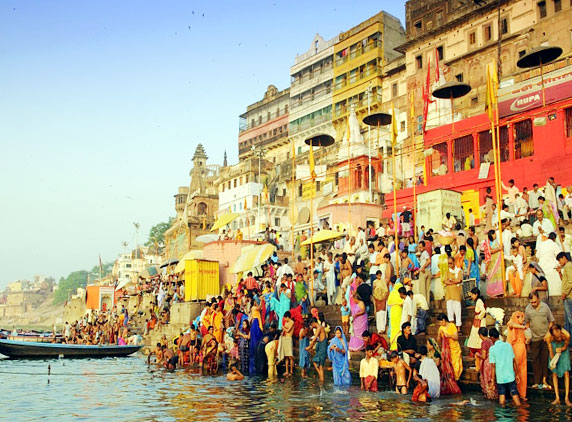
The Ghats
The stone-stepped embankments leading to the Ganga river are the gathering place of more than 250,000 pilgrims a year. To see the day unfold at the Ghats, you must rise before dawn to join the pilgrims. Holy men and women are up and about, busily chanting“Ganga Mai Ki jai !” “Praise be to Mother Ganga !”
Some are sannyasi, wandering beggars who have abandoned their homes and walked from as far as Chennai (Madras) to stand on the Ghats and pray, to bathe and drink the waters of the holy river, or just to sit and meditate on this supreme moment of their religious lives. Even the most aged and firm travel here to die, for nothing is more blessed for a devout Hindu than to die in the great waters of the Varanasi and thus be released from the eternal cycle of rebirth.
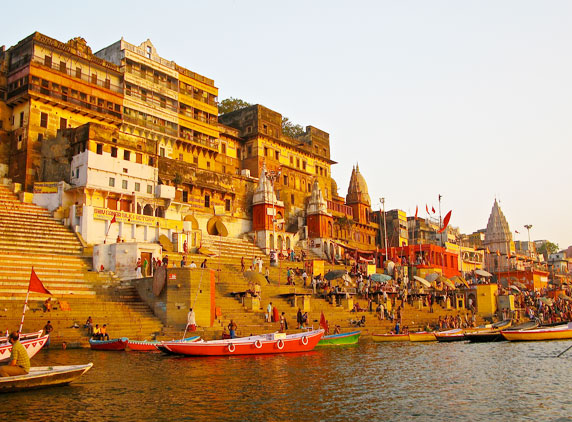
Practically all roads in town lead down to the Dasaswamedh Ghat, where Brahma the Creator is said to have made a ritual sacrifice of 10 horses. At the top of the steps, holy men sit under their bamboo umbrellas chanting mantras and offerings, for a coin or grains of rice, either sandalwood paste, flowers, or water from the Ganga.
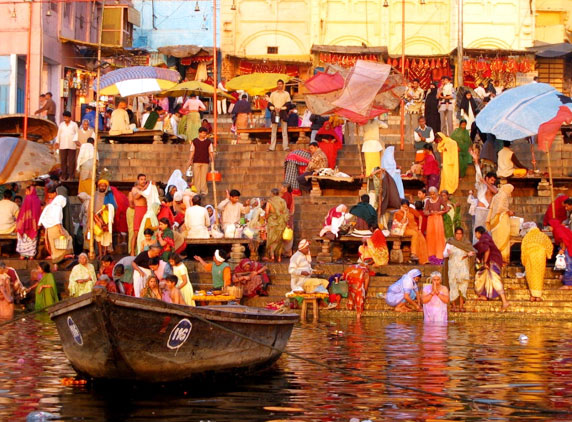
At the water's edges, you can rent a boat and go into midstream for a view of the impressive skyline, which features many Hindu temples, gopuram towers, Muslim minarets, and Mughal domes. In the 5 km (3 miles) between her tributaries, the Ganga inscribes a crescent, turning north, as it is suggested, for one last gesture of farewell to her sacred home in the Himalayas before descending east towards the Bay of Bengal. You can ask the boatman to take you further upstream to the Asi Ghat before doubling back as far as the Panchganga.
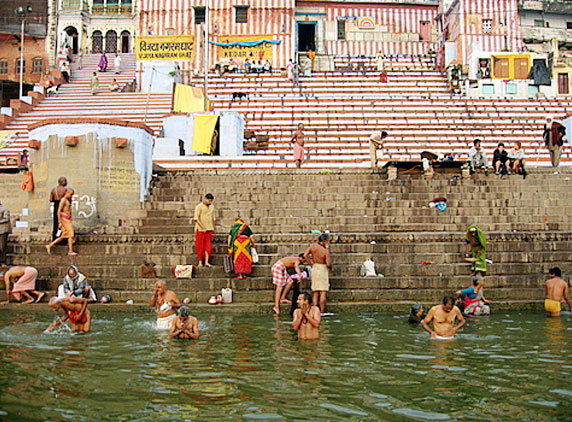
Notice how the ritual ablutions, which are highly elaborate when performed by a learned Brahman, usually involve a kind of crouching movement completed at least three times in the water. Women, you will notice, bathe in full sari. You'll see plenty of the soap and shampoo and, on the Dhobi Ghat, laundry-washing, too. After all, Mother Ganga, however sacred, is also just a river. Out on stone platforms, young men perform gymnastics, part of a devout self-discipline known as danda.
Those people who might at first be reluctant to confront the omnipresence of death along the river will be impressed by the simple dignity of the funeral rites here. Families bring their dead for their cremation to the holiest of Varanasi ghats, Manikarnika. The body, in a white shroud, is carried on a bier of bamboo to the river's edge where a few drops of Ganga water are poured into the lips of the dead. The body is placed on a pyre of perfumed sandalwood, which is then set alight.
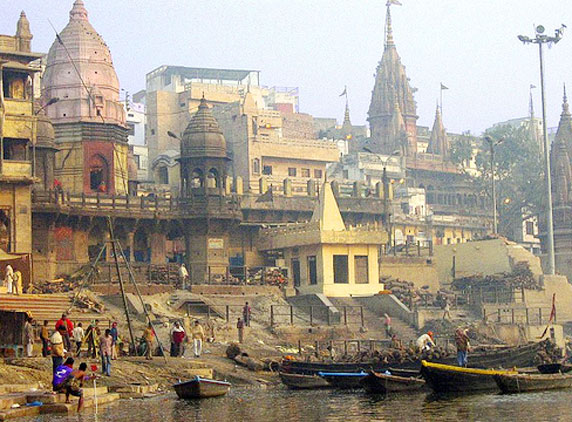
Jai Singh's observatory and learning temple, the Scindia Ghat, is at Man Mandir Ghat. The Alamgir Mosque rises behind the sacred Panchganga Ghat, said to be the mythical confluence of four Ganga subterranean tributaries.
The Town
The Chawk (bazaar) is famous for it's perfumes, silks, and brass ware. Look out for the gilded Golden Temple of Vishwanath, the holiest temple of Varanasi, forbidden to Non-Hindus. You can view it from the building opposite before going behind the temple to see the sacred bull, stained deep vermilion by the libations of it's worshippers.
The Varanasi Hindu University has an Art Museum with a superb collection of 16th-century Mughal miniatures, considered superior to the national collection in Delhi. The Ramnagar Fort which is located near the Ganges River on its eastern bank, opposite to the Tulsi Ghat, was built in the eighteenth century by Kashi Naresh Raja Balwant Singh with creamy chunar sandstone. It has typically Mughal style of architecture with carved balconies, open courtyards, and scenic pavilions. The fort and its museum are the repository of the history of the kings of Benares which has been the home of Kashi Naresh since the 18th century.
The current king and the resident of the fort is Anant Narayan Singh who is also known as the Maharaja of Varanasi even though this royal title has been abolished since 1971.The museum called “an eccentric museum” has a rare collection of American cars (vintage cars), sedan chairs (bejeweled), an impressive weaponry hall and a rare astrological clock.
The Ramnagar Fort
Furthermore, manuscripts, especially religious writings are housed in the Saraswati Bhawan while it also includes a precious handwritten manuscript by Goswami Tulsidas. There are many books illustrated in the Mughal miniature style, with beautifully designed covers are also part of the collections in the museum. Because of its scenic location on the banks of the Ganges, it is frequently used as an outdoor shooting location for films. The film titled “Banaras” is one of the popular movies shot here. However, only a part of the fort is open for public viewing as the rest of the area is the residence of Kashi Naresh and his family. It is 14 km from Varanasi. In fact, the Legendary film maker Satyajit Ray's Aparajito (The Unvanquished ) was also been based in Benares's Dasaswamedh Ghat which has won numerous national and international awards.
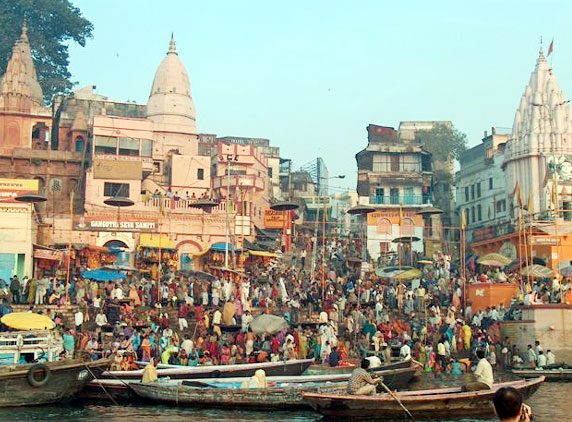
Dasaswamedh Ghat
Some of the famous lane of Varanasi (Benares) each one having their specialty are Vishwanath Gali(Lane), Kachauri Gali ,Khova Gali, Nandan Sahu Lane, Kalika Gali, Chitraghanta Gali, Brahamnala Gali,Nepali Khapada Gali, Bangali Tola Gali ,Kali Mohal Gali, Garhvasi Tola Gali, Someshwar Gali, Gola Gali, Pathar Gali, Anandmai Lane, Sankata Gali.
Other attractions include the "Chunar fort" which is situated 40 Km. from Varanasi. The Chunar Fort, overlooking the Ganges, has had a succession of owners representing most of India's rulers over the last 500 years. Sher Shah took it from Humayun in 1540, Akbar recaptured it for the Mughals in 1575 and in the 18th century it passed to the nawabs of Avadh. They were shorty followed by the British, whose gravestones here make interesting reading. Chunar sandstone has been used for centuries, most famously in Ashokan pillars and is still quarried, leaving the surrounding hills looking ravaged in places.
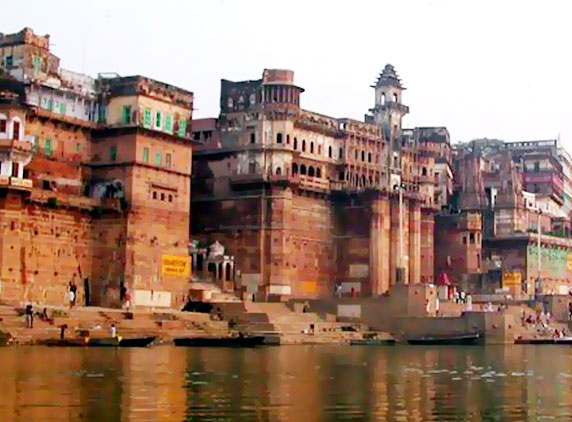
Chunar Fort
Some important facts to be know
Every city in India has connecting trains to Varanasi even though the mode of route should be via metros in this case preferences should be via Kolkata or Delhi. During summers, weather can be as hot as 45°C and humid too as Varanasi lies at the Tropic of cancer. Torrential rains and high humidity accompanies the monsoons that usually come in late June or early July for about two months. On the other hand, winters are pleasant and temperature dips down to about 7°C. In Varanasi, the climatic conditions are most favorable for the tourists between October and April. Moreover, carrying of emergency medicines along with drinking water would be better choice which is of course in all cases of travel.
One must contact the Tourism Information Offices a perfect tour to Varanasi.
Regional Tourist Office, U.P. Tourism. Parade Kothi, Cantt. Ph:(0542)-2206638, 2208413 U.P. Tourist Office, Sarnath. Open: 10 a.m.- 5 pm. Closed on Sundays and Govt. holidays. U.P. Government Tourist Information Counter. Varanasi Cantt, Railway Station, Near Enquiry Office , Main Hall. (Opens daily 6 am.-8 pm.) Ph: (0542)-2346370 Railway Tourism. Ph: (0542)-2506670 Govt. Of India Tourist Office.15B, The Mall Cantt. Varanasi. Ph: (0542)-2501784 Govt. Of India Tourist Information Counter,Babatpur Airport, Varanasi.
Varanasi, the holiest and the sacred place is a true gift to the human generations at present and yet to come, having them gain the maximum satisfaction out of life while giving them the purest form of love and also letting define purity of life.
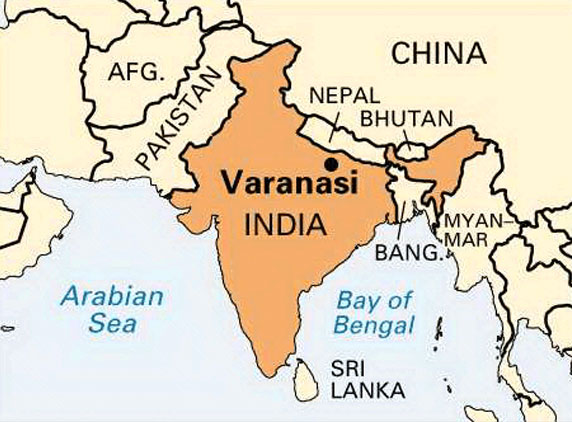
Varanasi on the map
Have a great visit!
(AW:Samrat Biswas)



